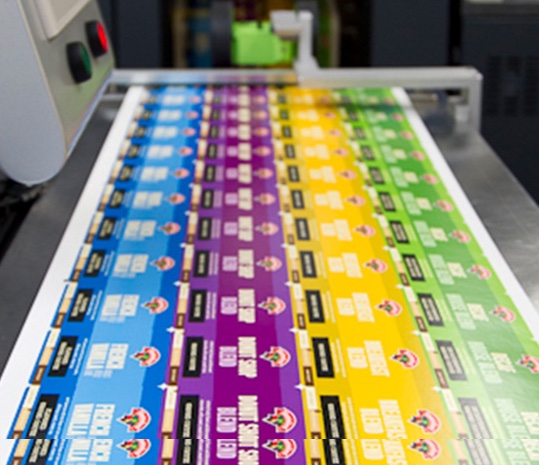Science has always been a frontier of human curiosity and progress. From Newton’s laws to the discovery of DNA, from the first vaccines to the Large Hadron Collider — breakthroughs in science have shaped the modern world. But the 21st century has brought with it not only faster computers and smarter phones but also a revolution in how science itself is conducted. Emerging technologies are transforming research in ways we could only imagine a few decades ago.
Let’s explore how artificial intelligence, quantum computing, gene editing, and other cutting-edge tools are reshaping the scientific landscape and accelerating discovery.
Artificial Intelligence: A New Scientific Partner
Artificial intelligence (AI) is no longer limited to chatbots or recommendation engines. In science, AI has become a powerful tool for solving complex problems.
Data analysis: Modern research often involves massive datasets — from climate models to genetic sequences. AI can scan, sort, and interpret this data far faster than any human could.
Drug discovery: Machine learning algorithms can predict how molecules will interact, helping scientists develop new medicines in weeks instead of years.
Scientific modelling: AI can simulate everything from protein folding to particle collisions, saving both time and resources.
AI doesn’t replace scientists — it augments their abilities, allowing them to ask better questions and test more hypotheses.
CRISPR and the Genetic Frontier
The discovery of CRISPR-Cas9 — a gene-editing tool — has opened a new era in biology. For the first time, we can edit DNA with high precision. This could lead to:
Curing genetic diseases like cystic fibrosis or sickle cell anemia
Improving crop yields and food security
Eradicating viruses by targeting and disabling their genetic material
While the ethical debates continue (e.g., should we edit embryos?), the scientific potential is enormous. Researchers are already exploring CRISPR not just to fix genes, but to rewrite the code of life.
Quantum Computing: Beyond Classical Limits
Quantum computers operate using qubits — particles that can exist in multiple states at once, unlike traditional binary bits (0 or 1). This gives them tremendous power for specific types of calculations.
In science, quantum computing could revolutionise:
Material science: Simulating molecules and discovering new materials
Cryptography: Solving or securing complex encryption systems
Fundamental physics: Modelling quantum systems that classical computers can’t handle
Though still in early development, quantum computing promises to unlock questions that today’s supercomputers can’t touch.
The Rise of Citizen Science
Technology isn’t just empowering professional scientists — it’s also enabling everyday people to contribute to research.
Smartphone sensors can collect environmental data
Platforms like Zooniverse allow volunteers to classify galaxies or identify animal species
Apps now track disease spread, pollution levels, and even stars
This rise in citizen science has opened the door to faster data collection and greater public engagement with science. It brings science out of the lab and into the hands of millions.
Automation and Robotics in the Lab
Scientific research can involve repetitive tasks: pipetting liquids, growing cultures, running tests. Increasingly, robots are taking over this work.
Lab automation systems can run 24/7, improving efficiency and precision
Robotic arms and AI tools can conduct entire experiments with minimal human input
This frees up researchers to focus on design, analysis, and interpretation
In some cases, fully autonomous labs — operated entirely by machines — are already in use. The lab of the future may be mostly robotic, monitored remotely by humans.
Open Science and Global Collaboration
The internet has made it easier than ever for scientists to collaborate across borders.
Open-access journals make research freely available
Preprint servers like arXiv and bioRxiv allow fast sharing of findings
Cloud computing enables shared analysis and modelling
During the COVID-19 pandemic, these tools allowed scientists worldwide to share data in real time, accelerating the development of vaccines and treatments.
The scientific community is increasingly adopting a “team science” approach — one that favours transparency, speed, and collective effort.
The Challenges Ahead
Despite the promise, these technologies raise new challenges:
Ethics: Who decides how gene editing is used? What risks do autonomous labs pose?
Bias: AI systems can reproduce human biases if trained on flawed data.
Accessibility: Cutting-edge tools can be expensive and unequally distributed.
Balancing progress with responsibility and equity will be critical as we move forward.
Conclusion: A New Era of Discovery
We are entering an era where science is no longer bound by the limitations of human speed or memory. With AI analysing data, robots running labs, and quantum machines solving problems beyond our grasp, the pace of discovery is accelerating.
Yet, the heart of science remains the same: curiosity, experimentation, and a desire to understand. The tools may change, but the spirit does not.
As we look to the future, one thing is clear: the scientists of tomorrow will have superpowers — not just in the lab, but in the questions they dare to ask.

